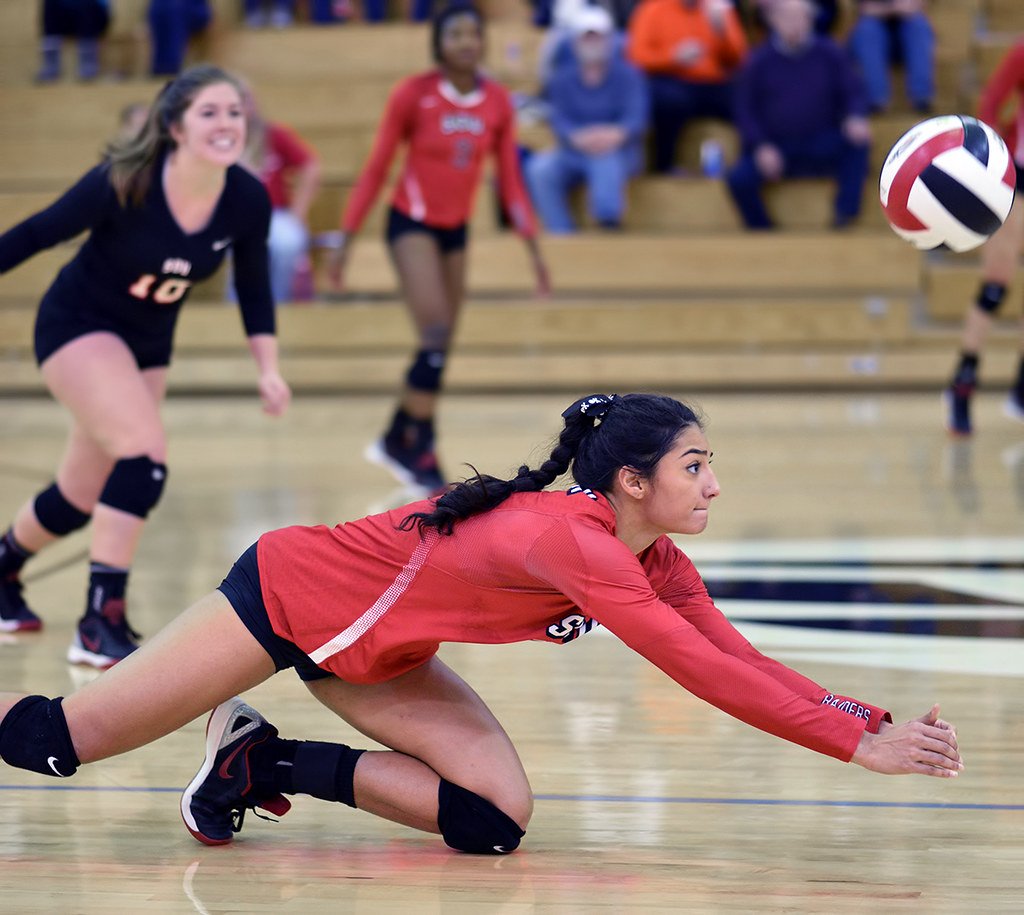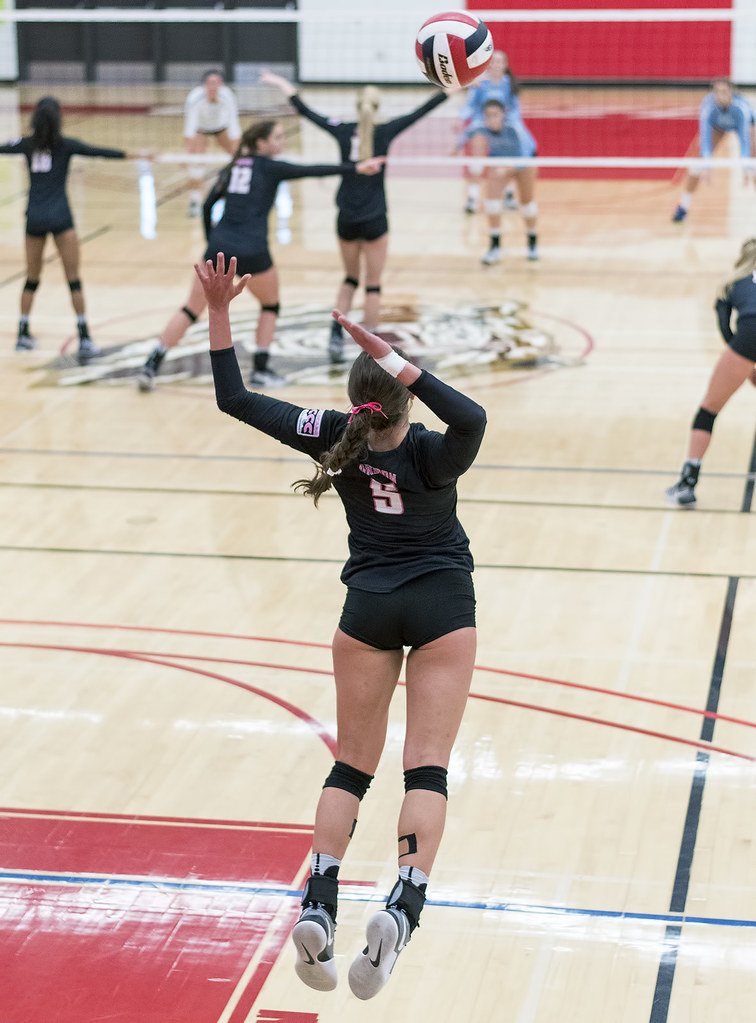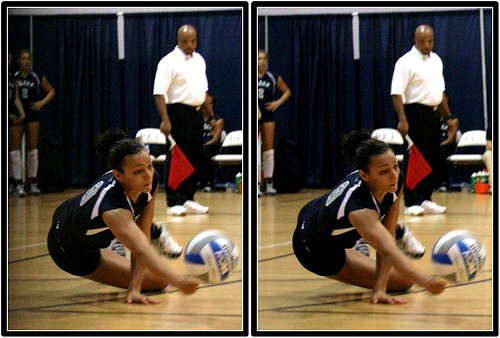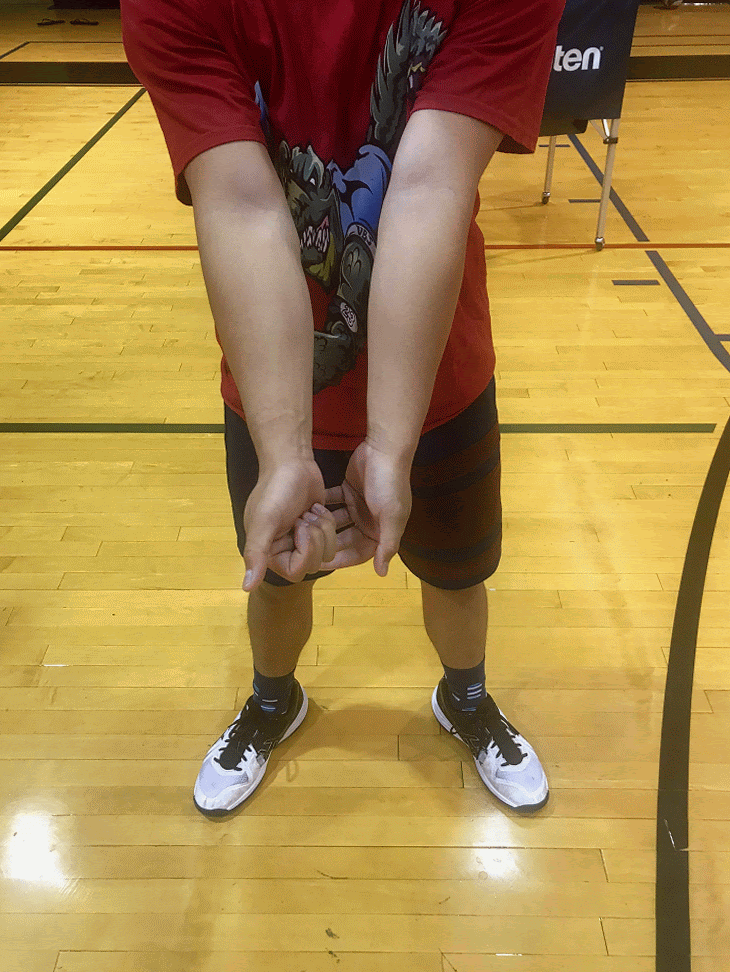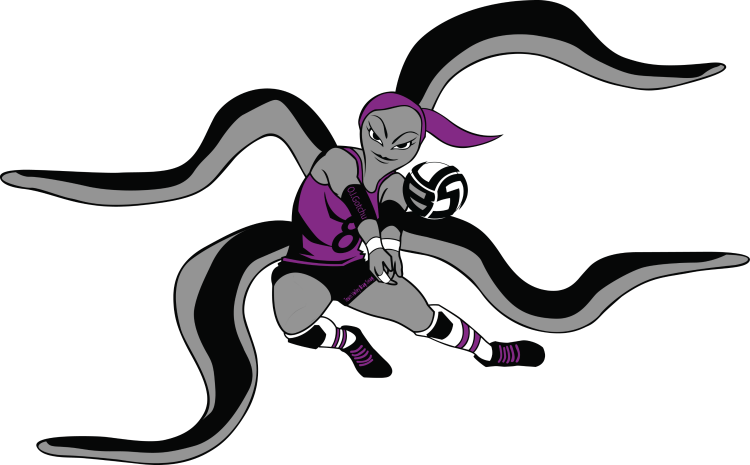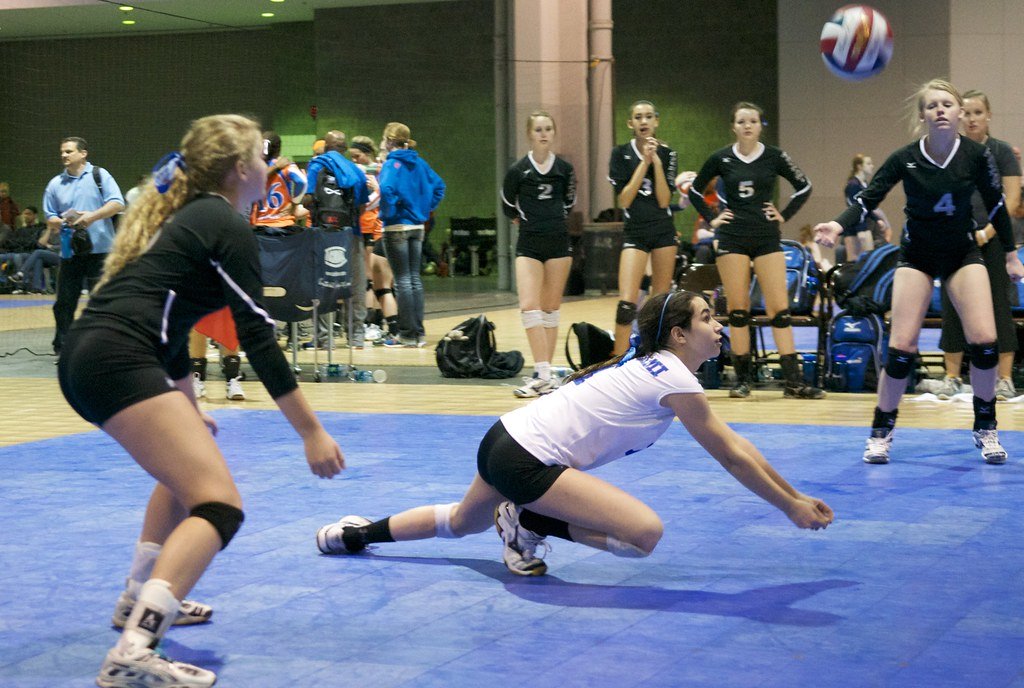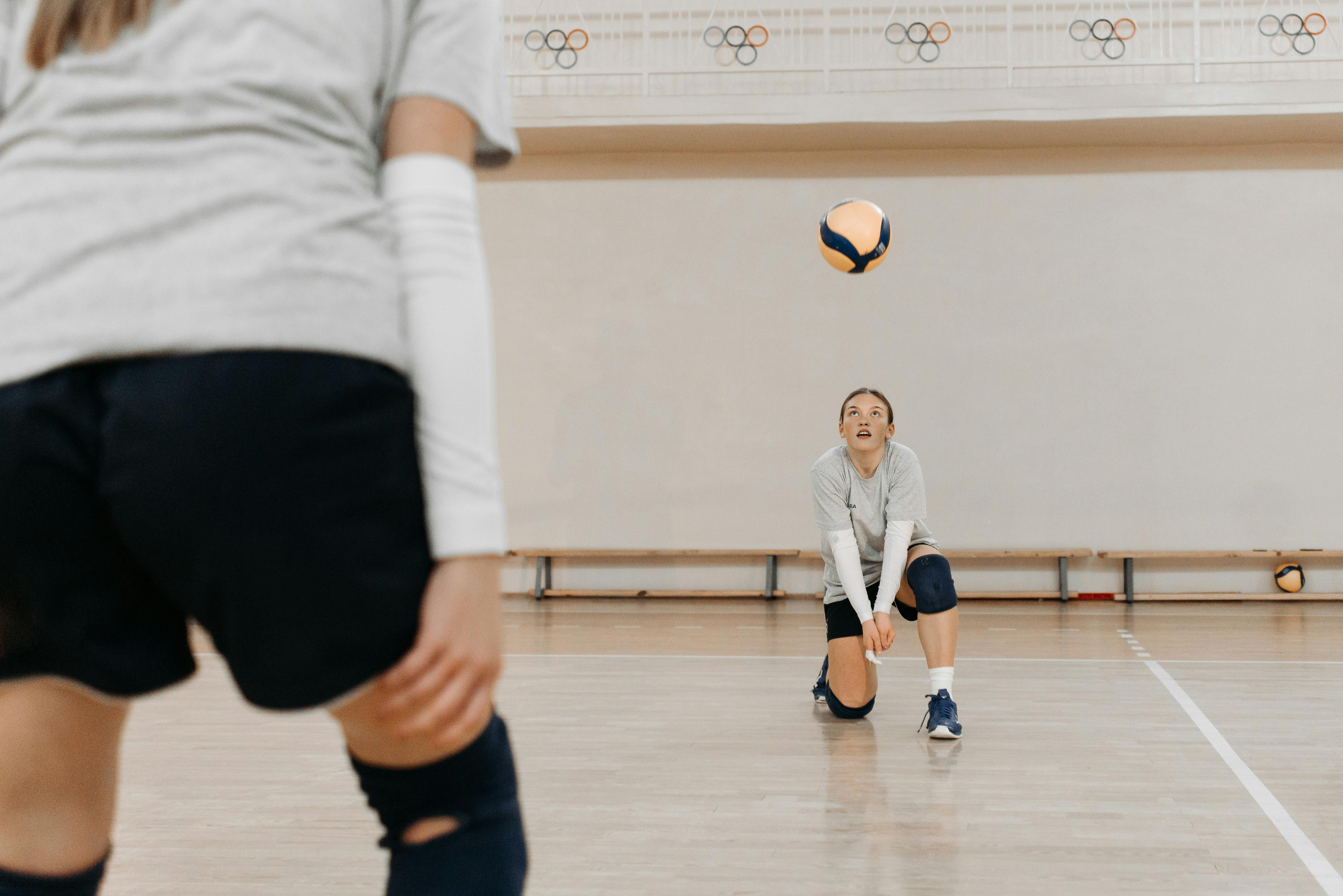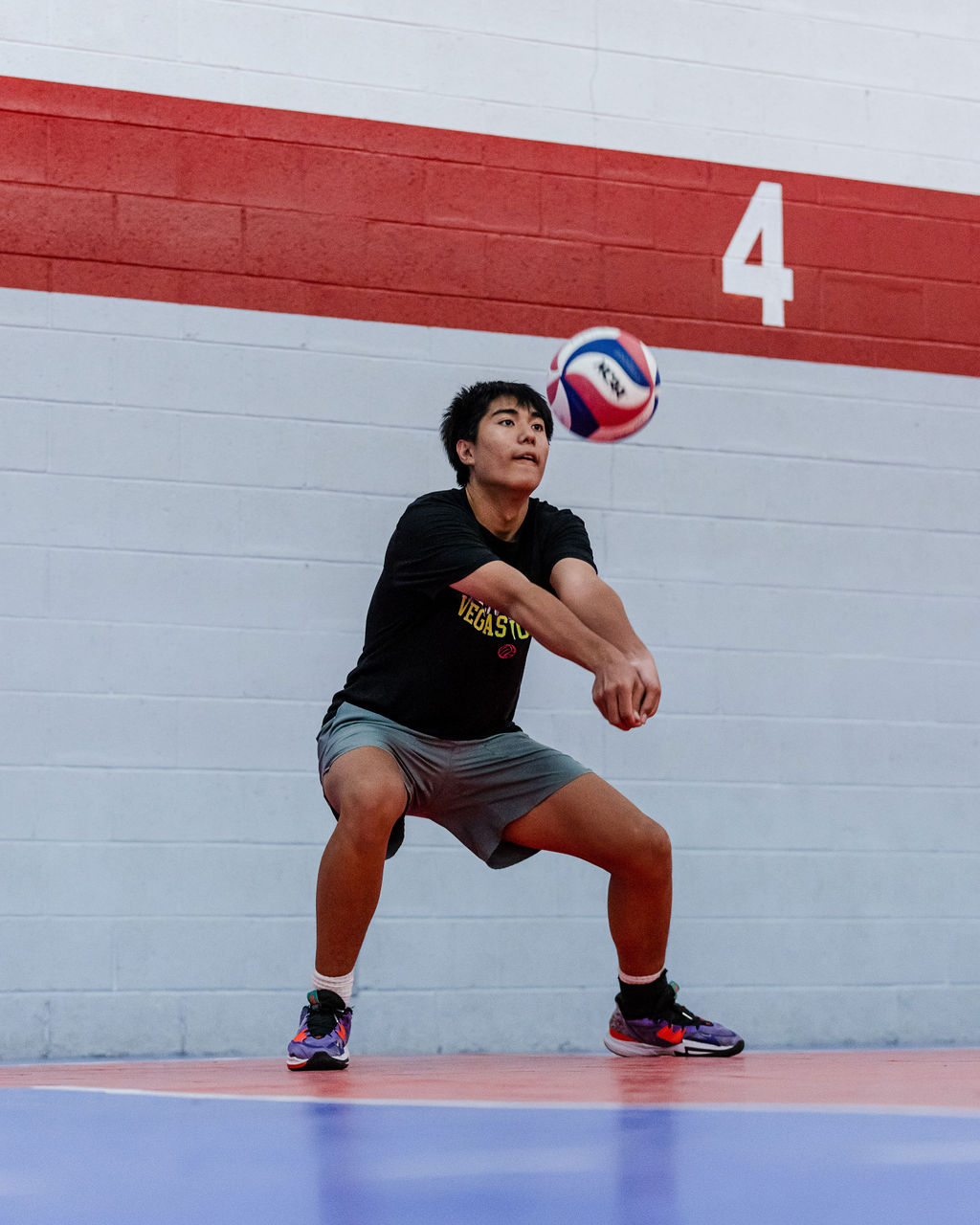- Improve Your Volleyball with Coach April
- How To Dig A Volleyball
- Dig Technique in Volleyball
 Dear Volleyball Mom,
Do You Know What Sets My Private Volleyball Training Apart From Anyone In Vegas?
I invite You to read what my private volleyball training mission says before considering hiring me as a private volleyball coach because I'm not available for everyone.
Dear Volleyball Mom,
Do You Know What Sets My Private Volleyball Training Apart From Anyone In Vegas?
I invite You to read what my private volleyball training mission says before considering hiring me as a private volleyball coach because I'm not available for everyone.The Dig Technique In Volleyball: A How To Guide To Digging Hard Spikes
Learn the dig technique in volleyball...after the ball is served how and where do you need to position yourself in order to keep hard spikes off your varsity team's floor
Welcome to my "how to" guide on how to master the dig technique in volleyball.
In this article, I look into the essential elements of the dig technique and provide practical tips to improve your defensive skills on the court.
The Fundamentals of the Dig Technique in Volleyball
- Positioning
Positioning is crucial when it comes to successful digs.
Teach your players the importance of being in the right place at the right time. Whether it's stepping forward for a front-row dig or for a fast attack from the opposing team or adjusting to cover their assigned area in the back row, a player's positioning sets the stage for a solid defensive play.
- Quick reactions and natural athleticism
Quick reaction time is another key aspect of effective digging.
Encourage your players to stay alert and responsive to incoming attacks.
Reacting instantly to the opposing team's spikes will give your players the best chance to make a successful dig and keep the ball in play.
This volleyball dig video became so popular it was trending on Twitter!
Texas Girls high school volleyball player Autumn Finney pulled off one of the greatest volleyball digging displays ever caught on tape.
Finney soars through the air and makes a fearlessly successful diving save.
This volleyball dig video became so popular it was trending on Twitter!
- Footwork with fast feet
Fast feet and quick footwork is equally essential.
Teach your players to utilize quick lateral movements to get into position quickly.
A slight shuffle step, or hop step to the left or right can make all the difference in reaching a hard-hit spike and preventing it from hitting the floor.
- Reading The Play
Being able to "read" what's going on on the other side of the net.
Looking at the ball being passed, to the ball the setter sets to their attacker, to the approach and arm swing of the spiker to the ball coming into your court...these are all things the digger needs to watch and assess quickly where to place themselves or move to so they can be in the right spot to dig or react to dig a ball in defense.
Remember, to remind your team about these fundamentals that will help them defend against hard spikes and turn those digs into opportunities to run an offense.
With proper positioning, quick reactions, and precise footwork, your players will be well on their way to becoming digging powerhouses!
Dig Technique in Volleyball
The Ball is Served - How Do You Defend A Spike in Volleyball?
How do you do a volleyball dig after the ball is served what do you need to do?
The act of serving is completely separate from the act of running to your starting defensive position.
- Make a tough serve or a strategic serve first, then run into the court to get to your base position in defense
Dig Technique in Volleyball
What Do You Watch?
If the opponent's first pass is coming over the net...
Once the opposing team passes the ball what's the one thing you need to do?
1. Is the opponent's first pass coming over the net?
- If so, pass the free ball to your setter
- If not, watch the quality of the pass and assess the setter's options.
- Can she run all her options? Will she be forced to tip the ball back over or is she in trouble because of a bad pass and is forced to joust with the opposing team's blockers?
- Sometime during the flight of the pass glance at the attackers to read and verbalize/talk about the developing play. Then (focus your attention to the setter) as the pass arrives
When The Ball Is Set How Do You Prepare To Dig In Volleyball?
Once the ball is set by the opposing team what two things should you do?
- Watch the setter deliver the ball.
- Assume the athletic "ready position"
Defense is an attitude!
Watch Japan dig after dig, amazing volleyball defense!
Dig Technique in Volleyball
Watch the setter deliver the ball.
- On higher sets, follow the set with your eyes no further than its apex/peak to determine the speed, the type and the landing location (wide, inside, back row, tight, etc).
- What kind of set did the setter deliver? Is it perfect, did it go to a back row hitter, is it a quick to the middle?
What Are Your Footwork Options With Your Dig Technique?
Use the proper footwork to adjust to your appropriate floor position while watching the approach angle and body language of the attacker
- Shuffle step: Use the shuffle step to cover very short distances to cover the court before digging the ball. Most footwork before diggina quick out of the middle is fast and quick and involve a hop step or a shuffle step before facing the oncoming attacked ball
- Back pedal step: liberos and back court diggers can use the back pedal step to get closer to the sideline before dropping their hips and putting their platform hands together before digging the ball up
- Turn your hips and hop step into your lowered adjusted position while watching the set is another option for diggers to use to move from their base defensive position to their adjusted position on the court where they can see the ball that the opposing hitter is about to hit towards their area of the court
4 Digging Drills For Volleyball Players To Do Like This Hit And Dig Drill With Cross Court Digging
Remember there are two ways to do this drill.
In this version we set the ball baskets as targets where the setter's would be. There are actually two digger groups working one in the left back Zone 5 position and one with a right back Zone 1 defensive position.
Hitters alternate at a steady rhythm so the drill moves quickly and diggers have a brief pause to recuperate after each dig.
Assume the "ready adjusted position." and be ready to react explosively towards the ball once you identify what kind of attack (hard driven or a tip or an off speed ball you may need to run down) coming towards you
- Know a tip is coming BEFORE it happens, be ready for the HARD driven ball FIRST, then be able to react from your position if the ball isnt coming right to you but is about to drop in your defensive area
Even though you're in a specific spot, you are responsible for an area on the court.
How Do You React To The Ball Using Correct Dig Technique in Volleyball?
When The Ball Is Attacked How Do You Dig It Up So It Doesn't Hit The Floor?
React...Pursue...Retrieve!
- React in the direction of the attacked ball.
- Never let a ball hit the floor without maximum effort to prevent the ball from hitting the floor
- Play the ball low by putting the hands together to create your digging platform Don't rush to contact the ball, play it at its lowest point possible.
- Keep shoulders strong and thumbs pointed to the ground to create a strong platform to use to deflect the ball in the air
How do you hold your hands, wrists and arms when you dig a ball?
Both arms are held together at the wrists so your arms form a flat surface, called a "platform" for the ball to bounce off of.
Your Wrists
To keep both wrists held together a digger places a closed fist inside the palm of the other hand and wraps the fingers around the closed fists so both thumbs are now together side by side and pointed to the ground when contacting the ball.
Your Elbows and Arms
This keeps the elbows and arms straight throughout the entire digging action.
You contact the ball on your platform above the wrists and below the inside of your elbows.
This area on your arms in volleyball terminology is called your "platform" and its what you use to contact and control balls that are below your waist.
You use your platform to contact the ball when you're passing a ball and you use it to complete a volleyball dig in defense.
Regularly Work On Your Dig Technique in Volleyball Practice
By focusing on
- proper technique
- reacting to the attack
- executing defensive footwork
- maintaining a strong platform
you'll be well-equipped to excel in the art of digging.
Remain dedicated to practice and continuous improvement, and your defensive skills will be an asset to your team's success.
Do You Follow Me on Pinterest?
 Private or semiprivate volleyball indoor/sand lessons are an excellent way for young Las Vegas high school volleyball players to quickly improve their individual skills through a private or semi-private coaching experience.
These lessons are conducted by former pro volleyball player, former USA Volleyball High Performance instructor and Evaluator and Tstreet Vegas 18s head Coach April Chapple on a weekly basis.
Sign up now!
Private or semiprivate volleyball indoor/sand lessons are an excellent way for young Las Vegas high school volleyball players to quickly improve their individual skills through a private or semi-private coaching experience.
These lessons are conducted by former pro volleyball player, former USA Volleyball High Performance instructor and Evaluator and Tstreet Vegas 18s head Coach April Chapple on a weekly basis.
Sign up now!Follow me on Pinterest Volleybragswag to improve your game even faster!
I share alot of individual, partner and easy-to-do volleyball serving drills we do in class with my followers.
Many of these volleyball practice drills you can do at home by yourself or try at your next practice with your teammates.
If you're a B team or JV player trying to make varsity next year...your goal should be to complete 1000 reps a day of at least three of the basic skills on your own...volleyball passing, serving and setting should be at the top of the list.
Volleyball Skills: Where Do You Go From Here?
No need to guess where you need to go now? Here are three options:
1. Learn more about Skills in Volleyball by clicking the related links below.
2. Follow the suggested reading on our Sitemap page Learning How To Play (Sitemap)
3. Or visit the pages in the How To Play section in the drop down menu at the top of the page to get started
4. Before leaving this page Say "Hi" to O.I. Gotchu the Volleybragswag Octopus below.
Meet O.I. Gotchu, Libero on VolleyBragSwag's All Beast Team
SUSCRIBE
To My Email Newsletter Below!
From Lady Vol to Legend: Coach April Produces Powerful Passionate Players...is that you?
Congratulations to my seven Boys-18s Vegas Volley club players who played in two state championship finals yesterday, the 3A and 5A State champinship finals at Sunrise Mountain High School.
TOURNAMENT CHAMPIONS!
A-1 Vegas Volley VBC
In It To Win It Tournament
May 2 - 4, 2025 Tournament
Gold Medalists
18s Premier Division
 Making A-1 Vegas Volleyball history as the very first TOURNAMENT CHAMPIONS! In the In It To Win It Tournament,
May 2-4, 2025 Tournament,
A-1 Vegas Volleyball Club
Gold Medalists, 18s Premier Division
Making A-1 Vegas Volleyball history as the very first TOURNAMENT CHAMPIONS! In the In It To Win It Tournament,
May 2-4, 2025 Tournament,
A-1 Vegas Volleyball Club
Gold Medalists, 18s Premier DivisionWhat Are You Looking For?

Hi there!
Thanks for stopping by. Hope you learned something today that will help you reach your volleyball goals.
Be sure to subscribe to my email newsletter so you can learn more each week!
Stay strong! Stay motivated!
-Coach April

SUSCRIBE
to my email newsletter below!
Vegas Volleyball's Unsung Heroes: Celebrating Moms with Peace Love Volleyball Shirts
Ready to energize your volleyball mom journey?
Subscribe to my 'Producing Powerful Passionate Peaceful Players' email list above on ImproveYourVolley.com.
You'll receive energy-boosting tips, exclusive insights from me, Coach April Chapple on maintaining momentum in volleyball.
Let's power up the Vegas volleyball scene together!
Recent Articles
-
How To Improve Serve Receive and Get More Playing Time in Volleyball
Jul 06, 25 02:27 AM
Learn the proven 3-step system I use to help club and high school volleyball players become consistent passers and get noticed by college coaches. -
Improve Your Volleyball Forearm Pass With My Five Ball Control Tips
Jul 05, 25 08:38 PM
Learn about these five volleyball forearm pass tips that will help you get the ball to your setter consistently while your team is on serve receive in a rally. -
What Sets My Private Volleyball Training Apart From Anyone In Vegas?
Jul 05, 25 07:50 PM
You should learn what my private volleyball training mission says before you hiring to me as a private volleyball coach because I'm not available for everyone..
